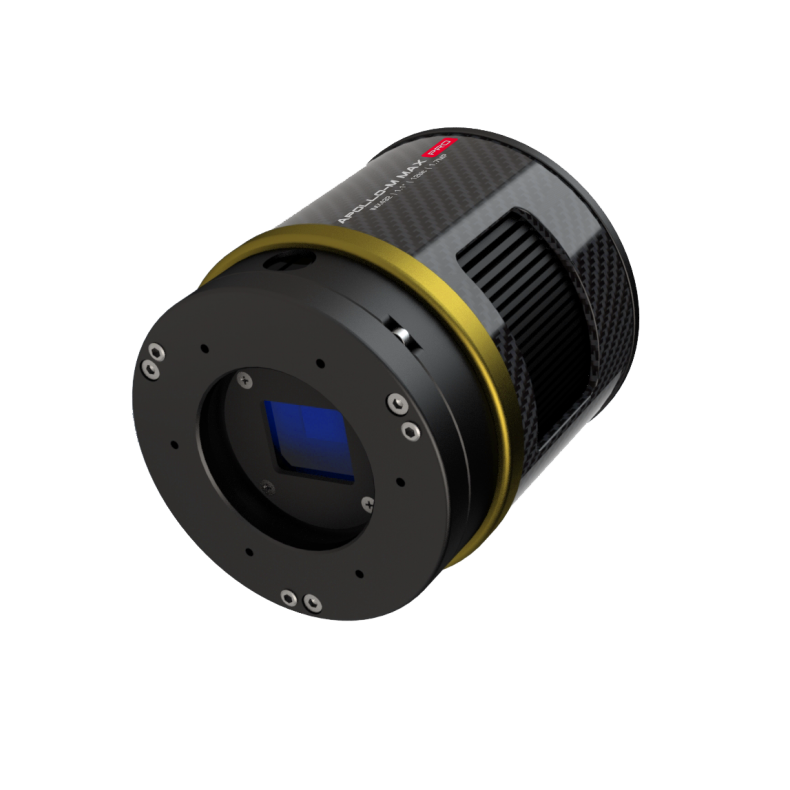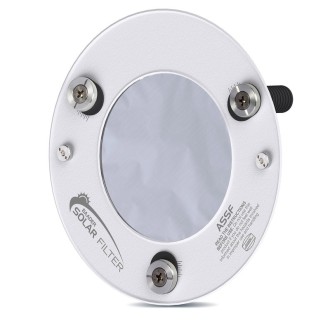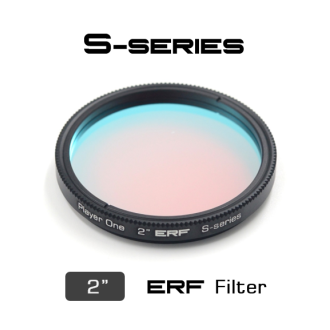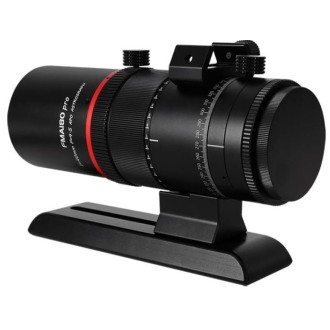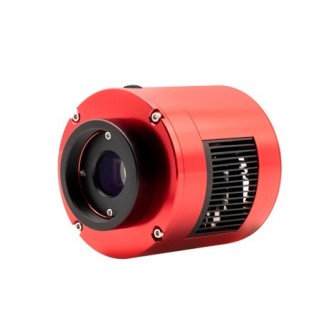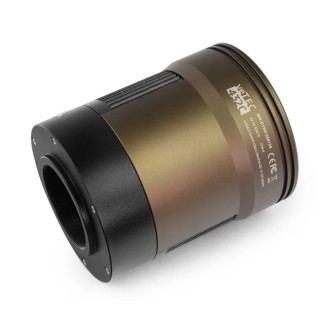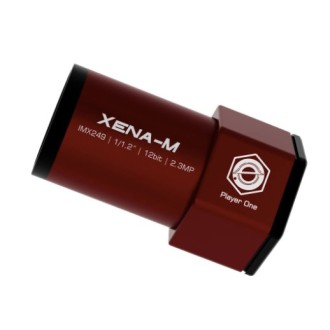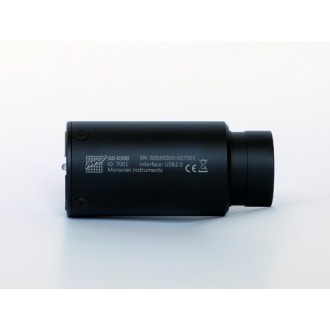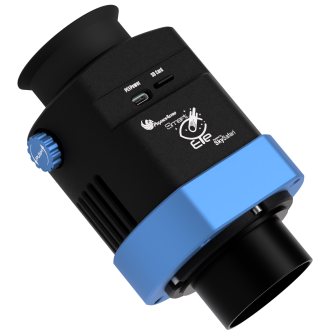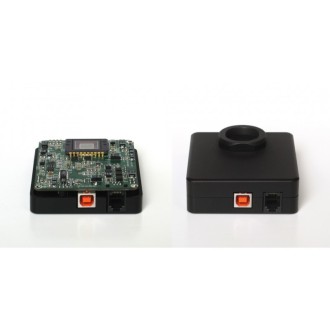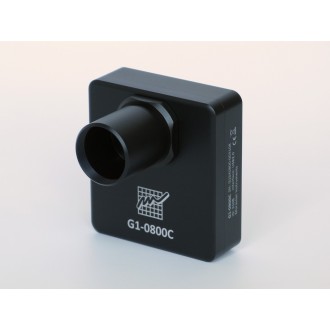
Player One Apollo-M MAX Pro USB3.0 Mono (IMX432) Cooled USB3.0 Camera
The DSO line of refrigerated chambers is the most advanced product line in Player One's history. Itbrings the newest technology and design to everyone.
| Carrier | Description | Estimated Delivery | ||
|---|---|---|---|---|
 |
Home delivery - International | Home delivery - International |
Tuesday, 6 May - Tuesday, 13 May |
|

Home delivery - International
Home delivery - International
Estimated delivery:
Tuesday, 6 May - Tuesday, 13 May

Power supply is not included in the camera package, high quality 12V 5A power supply link: https://player-one-astronomy.com/product/12v-5a-power-supply-dc5-5-x-2-1mm/
Download drivers and software: http://player-one-astronomy.com/service/software/
Download manuals: http://player-one-astronomy.com/service/manuals/
Installation tutorial (Demonstration with Ares-C Pro): https://youtu.be/KULYpNa8SBM
PRODUCT DESCRIPTION:
The Apollo-M MAX Pro (IMX432) camera has been developed by Player One Astronomy, a true cooled camera for solar imaging. The Apollo-M MAX Pro camera, which adopts the 1.1" Sony IMX432 format monochrome sensor. The pixel size of 9um allows a well depth of 100Ke with a total of 1.7MP (resolution is 1608*1104), and the diagonal is 17.5mm.
STARVIS Technology
Apollo-M MAX Pro (IMX432) based on Sony Pregius 3rd Gen technology, is a global shutter technology used in CMOS sensors.
Format
Apollo-M MAX Pro (IMX432) has a 1.1″ format, it is the largest sensor in the entire solar camera series currently, this size is quite large for imaging.
Pixel size
9um pixel size is 1.5 times larger than IMX174 camera, which means it can work with longer focal ratio, such as SCT + Daystar filter (with 4.2X).
HIGHLIGHTS:
Cutting-edge design
The Apollo-M MAX Pro cooled camera uses the same design as the Ares cooled series, but with a slight difference. With a round body, a gold and black color scheme, and the use of carbon fiber to keep the weight low and the outlook cutting edge. It also has integrated sensor rocker plate and anti-mildew PCB board. This series of designs makes the camera not only light and cool, but also functional.
Front 3P and rear 4P tilting plate
When photographing deep sky objects, the sensor tilting plate can be used to adjust the tilt angle of the sensor to make the stars in the corners more rounded. The Apollo-M MAX Pro camera provides both front and rear tilt plate to satisfy all usage scenarios.
The 3P front tilt plate is the default part of the camera, we believe most users have experience with this before. it works well in a lot of basic scenarios.
4P rear tilt plate is an alternative part for the camera, when using the filter wheel/filter box and OAG with fixed angel, it is necessary. And it is also convenient for RASA users to adjust the tilt angel of sensor.
Built-in high density sponge shading pad can block the light from side slits without any side leakage.
Carbon fiber and light weight
The Apollo-M MAX Pro uses carbon fiber in the camera housing and has been optimized to reduce weight in its structural design. The camera weighs only 420 grams, making it one of the lightest models on the market.
Deep cooling
Player One series refrigerated chamber uses a 2-stage TEC cooling unit, after improving the structure design to reject heat back into the chamber, the Delta-T of the chamber can reach 35-40℃.
Anti-mold heater
In the design of light refrigerated chambers, Player One is still pursuing perfection, any necessary features must have, especially the anti-mold system, it is the problem that a lot of small refrigerated chambers ignore.
Full well
100Ke full well, it is 3 times bigger than IMX174. This feature will bring some new possibility in imaging. What we can imagine is HDR of the Sun and prominence, or maybe the bright and dark side of the Moon.
HCG and Noise
HCG mode will automatically open when the gain is ≥145, read noise will drop to 4.6e. And the dynamic range will increase to 12 drops again.
With a gain of 380, the read noise of Apollo-M MAX (IMX432) camera is 2.6e, lower than IMX174. And the full well will still be higher than IMX174.
Amp-Glow Performance
Apollo-M MAX Pro is not a camera without amp-glow, but its amp-glow is very smooth, we believe it will be easier to calibrate. In solar imaging, it won't be a problem at all.
300s@gain=0, offset=10, -10 degrees, dark frame of the Apollo-M MAX Pro camera
Preview of Dark frame: Exposure=300s, gain=0, offset=10, temp=-10℃ STF auto-Stretch in Pixinsight 1.86
512 MB DDR3 cache
As an improvement, the DDR3 cache of the cooled cameras has been increased to 512 MB. It helps stabilize and secure data transmission, effectively prevents frame dropping and greatly reduces read noise.
With DDR3 cache, the camera no longer has high demands on computing needs, it will still have excellent performance even if connected to a USB 2.0 port.
Type-C data port and power port
The back of the cooled camera has 2 Type-C data ports and a 12V DC 5.5×2.1mm power port.
The main data port supports USB3.0 protocol, the camera can run at 126 fps in RAW8 mode.The Type-C port is easier to connect when mounting the imaging equipment at night.
When recording images, since the actual writing speed will be affected by the writing speed of the hard disk itself, when the writing speed of the hard disk is slow, the recording may not reach the theoretical speed. It is recommended to use a high quality solid state drive for recording data to take full advantage of the camera's performance.
The camera has a 12V DC5.5*2.1mm port to provide sufficient power to the TEC cooling system. If you do not need to power the cooling, just connect the main Type-C port, the camera will work as an uncooled camera.
Standard cable usage
Cooling system and anti-mold heater
In ASCOM window, we provide 3 adjustable parameters: target temperature, fan speed and anti-mold power.
Standard Delta-T : 35℃-40℃(Long exposure mode), 30℃(Video mode), when ambient temperature is 30℃, fan speed 100%, anti-mildew heater 1%.
Recommended Delta-T settings: 30℃-35℃ below ambient temperature, fan speed 50-70%, dew heater 10%, power consumption 40- 60%.
Cooling fan rotation speed is also adjustable, the default value is 50% speed.
The problem of dew is the biggest enemy of astral imaging, the camera integrates an anti-dew heater in front of the camera. The heating power is adjustable.
Over-voltage and over-current protection mechanism
Player One cameras produced by number one ensure the safety of your camera and other equipment through overvoltage and overcurrent protection mechanisms.
Performance
HCG open with gain=145.
Read noise
As for read noise, we solemnly promise that all values have been obtained from real tests. And for users, you can use Sharpcap 4 for testing. SC4 has a feature called Sensor Analysis, which provides a very simple way to test read noise.
We have written a tutorial on our website: https://player-one-astronomy.com/service/manuals/
If you are interested in testing read noise, you can try it yourself, which is very simple.
Dark current
The dark current is 0.3e/s/pix at -20℃, and 0.39e/s/pix at 0℃.


BFL solutions
Some 55mm BFL solutions are recommended below for this camera. If you do not consider BFL, the connection way is various.




